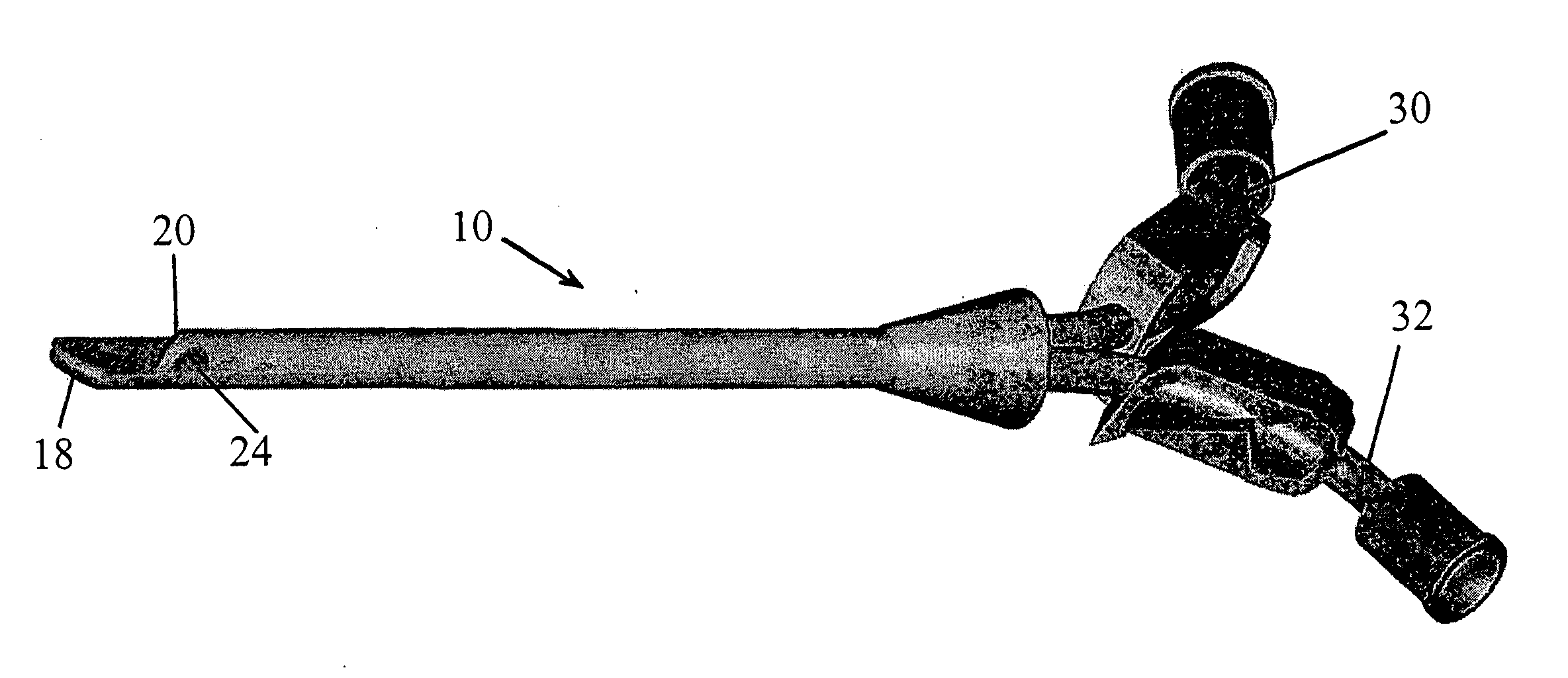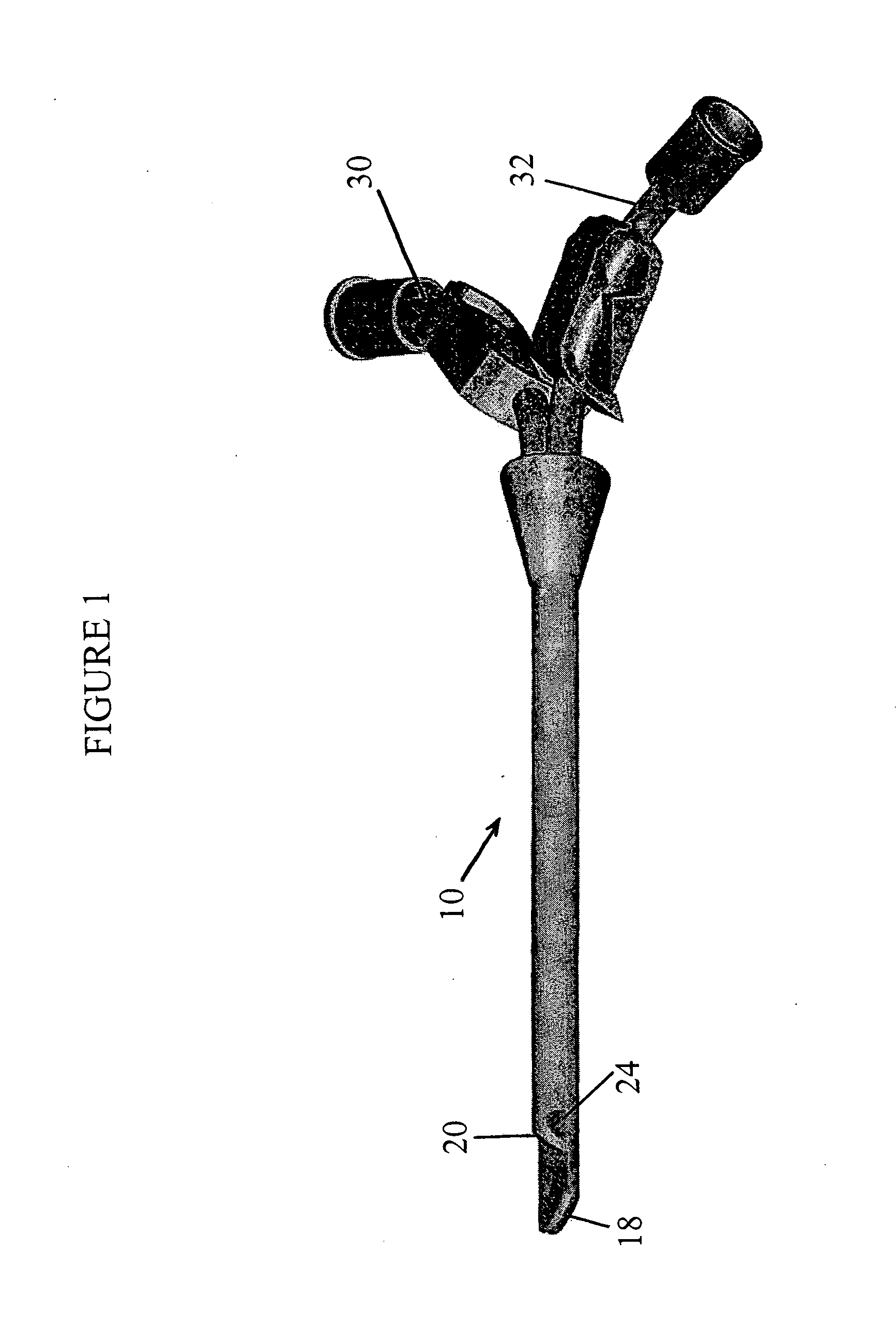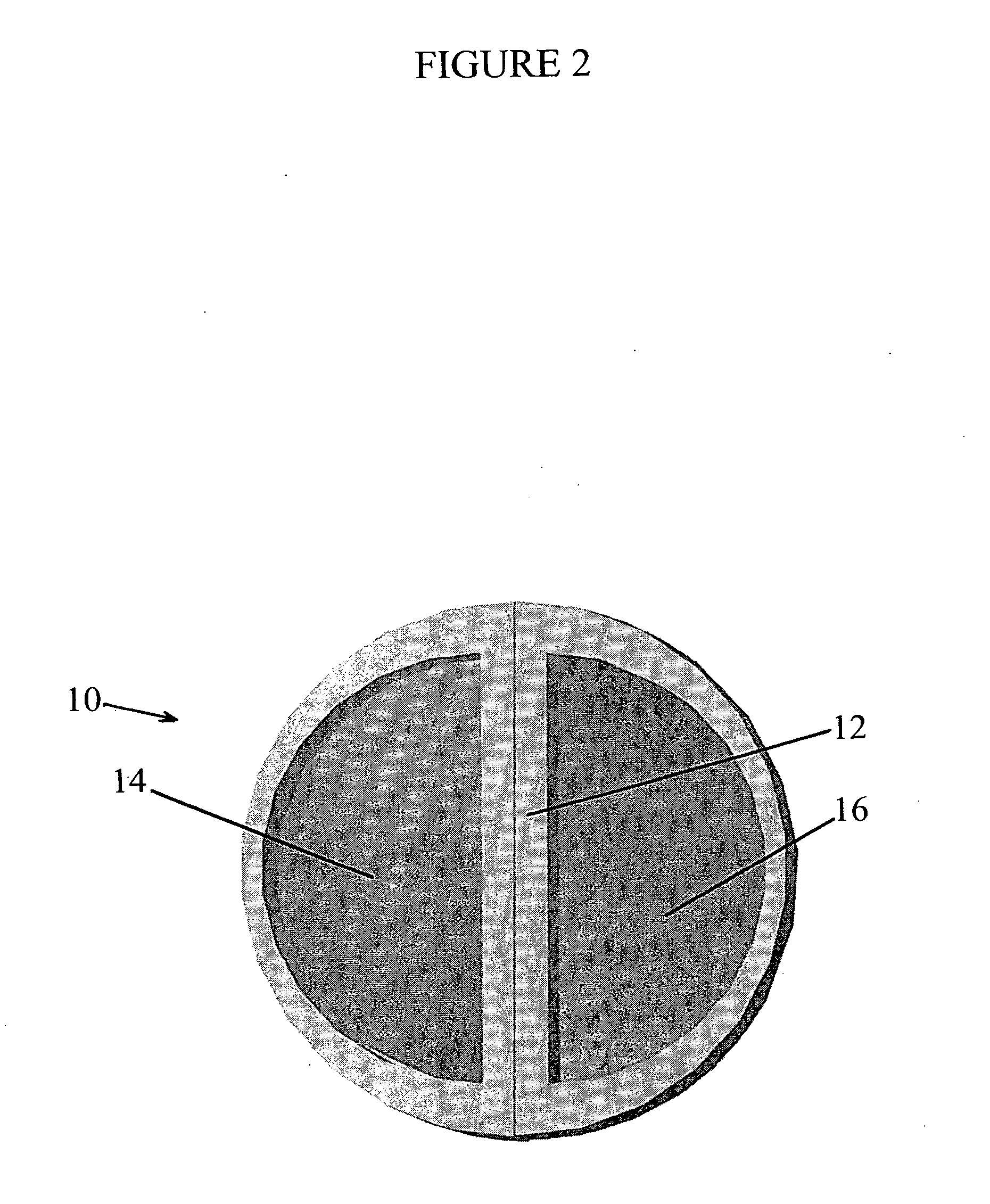Multi-lumen catheter
- Summary
- Abstract
- Description
- Claims
- Application Information
AI Technical Summary
Benefits of technology
Problems solved by technology
Method used
Image
Examples
Embodiment Construction
[0036] In accordance with the apparatus of the present invention, there is provided a catheter body that is adapted for insertion into a vessel of a patient such as, for example, a vein. The catheter body comprises an external wall and a septum extending longitudinally along the internal length of the catheter body to define two substantially parallel lumina each having an internal wall and a port located at the side of the distal end thereof.
[0037] At the distal end of each lumen, at least a portion of the internal walls of the lumina are curved or angled to define a transition zone terminating at the port. So configured, the transition zone permits the flow of fluids traveling the length of the lumen to be gradually deflected from the longitudinal direction of the lumen to the transverse direction of the side-facing port at the distal end thereof.
[0038] For fluids entering the side-facing port of the lumen, the transition zone permits the flow to be gradually deflected from the ...
PUM
 Login to View More
Login to View More Abstract
Description
Claims
Application Information
 Login to View More
Login to View More - R&D
- Intellectual Property
- Life Sciences
- Materials
- Tech Scout
- Unparalleled Data Quality
- Higher Quality Content
- 60% Fewer Hallucinations
Browse by: Latest US Patents, China's latest patents, Technical Efficacy Thesaurus, Application Domain, Technology Topic, Popular Technical Reports.
© 2025 PatSnap. All rights reserved.Legal|Privacy policy|Modern Slavery Act Transparency Statement|Sitemap|About US| Contact US: help@patsnap.com



